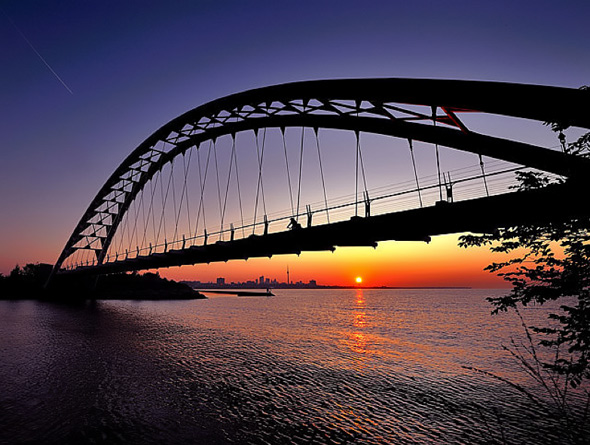muller877
Senior Member
Going north, the bike path (the diagonal path to the right of the photo) connects with Lundy Avenue (on a hill). Riders then ride west on Old Dundas to reconnect with the bike path (the path under the Dundas Street West bridge). Riders have been known to dismount their bikes because of the hill (especially from riding all the way up from downtown).
There is a foot path that follows the river edge more closer, but riders should dismount to negotiate it (unless you're using a mountain bike). A solution would be to rebuild the footpath as a bicycle path.
Ah...now I understand. Was thinking Old Dundas on the other side of the river.
It's a fairly narrow path for pedestrians right now. A bike trail would have to be wider than the current path. Since it's on a slope it would probably require a retaining wall either on the up or down-slope of the path (or both). Would cost more than you think but not obscenely expensive. Of course the TRCA would also need to be involved which creates additional headaches.
And of course you have to think about the children! Safety! Handrails would be a must! (which would make it wider again)







